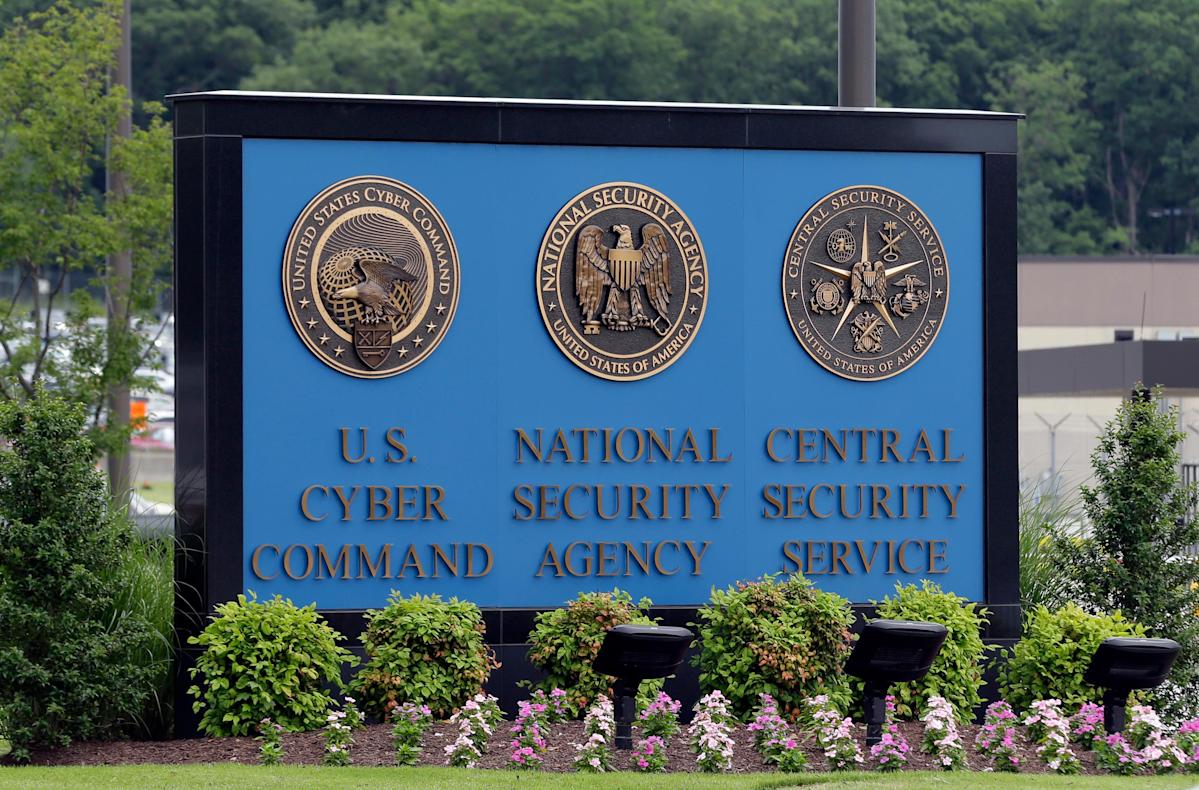
WASHINGTON (AP) — The peril National Security Agency staff wanted to discuss with their director didn’t involve terrorists or enemy nations. It was something closer to home: the racism and cultural misunderstandings inside America’s largest intelligence service.
The NSA and other intelligence agencies held calls for their staff shortly after the death of George Floyd. As Gen. Paul Nakasone listened, one person described how they would try to speak up in meetings only to have the rest of the group keep talking over them. Another person, a Black man, spoke about how he had been counseled that his voice was too loud and intimidated co-workers. A third described how a co-worker addressed them with a racist slur.
The national reckoning over racial inequality sparked by Floyd’s murder two years ago has gone on behind closed doors inside America’s intelligence agencies. Publicly available data, published studies of its diversity programs, and interviews with retired officers indicate spy agencies have not lived up to years of commitments made by their top leaders, who often say diversity is a national security imperative.
People of color remain underrepresented across the intelligence community and are less likely to be promoted. Retired officers who spoke to The Associated Press described examples of explicit and implicit bias. People who had served on promotion boards noted non-native English speakers applying for new jobs would sometimes be criticized for being hard to understand — what one person called the “accent card.” Some say they believe minorities are funneled into working on countries or regions based on their ethnicity.
Director of National Intelligence Avril Haines, the first woman to serve in her role, has appointed diversity officials who say they need to collect better data to study longstanding questions, from whether the process for obtaining a security clearance disadvantages people of color to the reasons for disparities in advancement. Agencies are also implementing reforms they say will promote diversity.
“It’s going to be incremental,” said Stephanie La Rue, who was appointed this year to lead the intelligence community’s efforts on diversity, equity and inclusion. “We’re not going to see immediate change overnight. It’s going to take us a while to get to where we need to go.”
The NSA call following Floyd’s death was described by a participant who spoke on condition of anonymity to discuss the private discussion. The person credited Nakasone for listening to employees and making public and private commitments to diversity. But the person and other former officials said they sometimes felt that their identities as people of color were discounted or not fully appreciated by their employers.
The NSA declined to comment on the call. It said in a statement that agency officials “regularly examine the outcomes of our personnel systems to assess their fairness.”
“Beyond the mission imperative, NSA cultivates diversity and promotes inclusion because we care about our people and know it is the right way to proceed,” the statement said.
A former NSA contractor alleged this year that racist and misogynistic comments often circulate on classified chatrooms intended for intelligence work. The contractor, Dan Gilmore, wrote in a blog post that he was fired for reporting his complaints to higher-ups. A spokeswoman for Haines, Nicole de Haay, declined to comment on Gilmore’s allegations but said employees who “engage in inappropriate conduct are subject to a variety of accountability mechanisms, including disciplinary action.”
The U.S. intelligence community has evolved over decades from being almost exclusively run by white men — following a stereotype that Rep. Jim Himes, a Connecticut Democrat, referred to in a hearing on diversity last year as “pale, male, Yale.” Intelligence agencies that once denied security clearances to people suspected of being gay now have active resource groups for people of different races and sexual orientation.
Testifying at the same hearing as Himes, CIA Director William Burns said, “Simply put, we can’t be effective and we’re not being true to our nation’s ideals if everyone looks like me, talks like me, and thinks like me.”
But annual charts published by the Office of Director of National Intelligence show a consistent trend: At rising levels of rank, minority representation goes down.
Latinos make up about 18% of the American population but just 7% of the roughly 100,000-person intelligence community and 3.5% of senior officers. Black officers comprise 12% of the community — the same as the U.S. population — but 6.5% at the most senior level. And while minorities comprise 27% of the total intelligence workforce, just 15% of senior executives are people of color.
A 2015 report commissioned by the CIA said the “underrepresentation of racial/ethnic minority officers and officers with a disability at the senior ranks is not a recent problem and speaks to unresolved cultural, organizational, and unconscious bias issues.” Among the report’s findings: Progress made between 1984 and 2004 in promoting Black officers to senior roles had been lost in the following decade and recruitment efforts at historically Black colleges and universities “have not been effective.”
“Since its founding, the Agency has been unmistakably weak in promoting diverse role models to the executive level,” the report said.
Lenora Peters Gant, a former senior human capital officer for the CIA and Office of the Director of National Intelligence, wrote last year that the intelligence community constantly imposes barriers on minorities, women and people with disabilities. Gant, now an adviser at Howard University, called on agencies to release some of their classified data on hiring and retention.
“The bottom line is the decision making leadership levels are void of credible minority participation,” Gant said.
ODNI is starting an investigation of the slowest 10% of security clearance applications, reviewing delays in the cases for any possible examples of bias. It also intends to review whether polygraph examiners need additional race and ethnicity training.
The intelligence community currently doesn’t report delays in getting a security clearance — required for most agency jobs — based on race, ethnicity or gender. The months or years a clearance can take can push away applicants who can’t wait that long.
The office is implementing annual grant monitoring and assigning additional staff to work with universities in the intelligence community’s Centers for Academic Excellence program, intended to recruit college students from underrepresented groups. A 2019 audit said it was impossible to judge the program due to poor planning and a lack of clear goals.
The program also got a new logo after ODNI officials heard that the previous “IC CAE” insignia appeared to spell out “ICE,” an unintended reference to U.S. Immigration and Customs Enforcement.
Additional quiet changes are taking place across the agencies. Officials say the changes were in process before Floyd’s death, though conversations held with employees brought new urgency to diversity issues.
The NSA stopped requiring applicants for internal promotions to disclose the date they were last promoted to the boards considering their application. Officials familiar with the change say it was intended to benefit applicants who take longer to move up the agency ladder, often including working parents or people from underrepresented communities.
The CIA two years ago formally tied yearly bonuses for its senior executives to their performance on diversity goals, measured next to factors such as leadership and intelligence tradecraft. Last year’s class of new senior executives was the most diverse in the agency’s history, with 47% women and 27% people from minority backgrounds, which exceed the percentages of women and minorities in the agency’s total workforce.
Said CIA spokesperson Tammy Thorp: “We are proud of the Agency’s progress in ensuring our hiring, assignment, and promotion processes do not create barriers to advancement.”
La Rue, the chief diversity officer for the intelligence community, has hired several data analysts and plans for her office to issue annual report cards on diversity for each intelligence agency. She acknowledges advocates have to break through enduring skepticism inside and outside government that diversity goals undermine the intelligence mission or require lower standards.
“The narrative that we have to sacrifice excellence for diversity, or that we are somehow compromising national security to achieve our diversity goals, is ridiculous,” she said.




